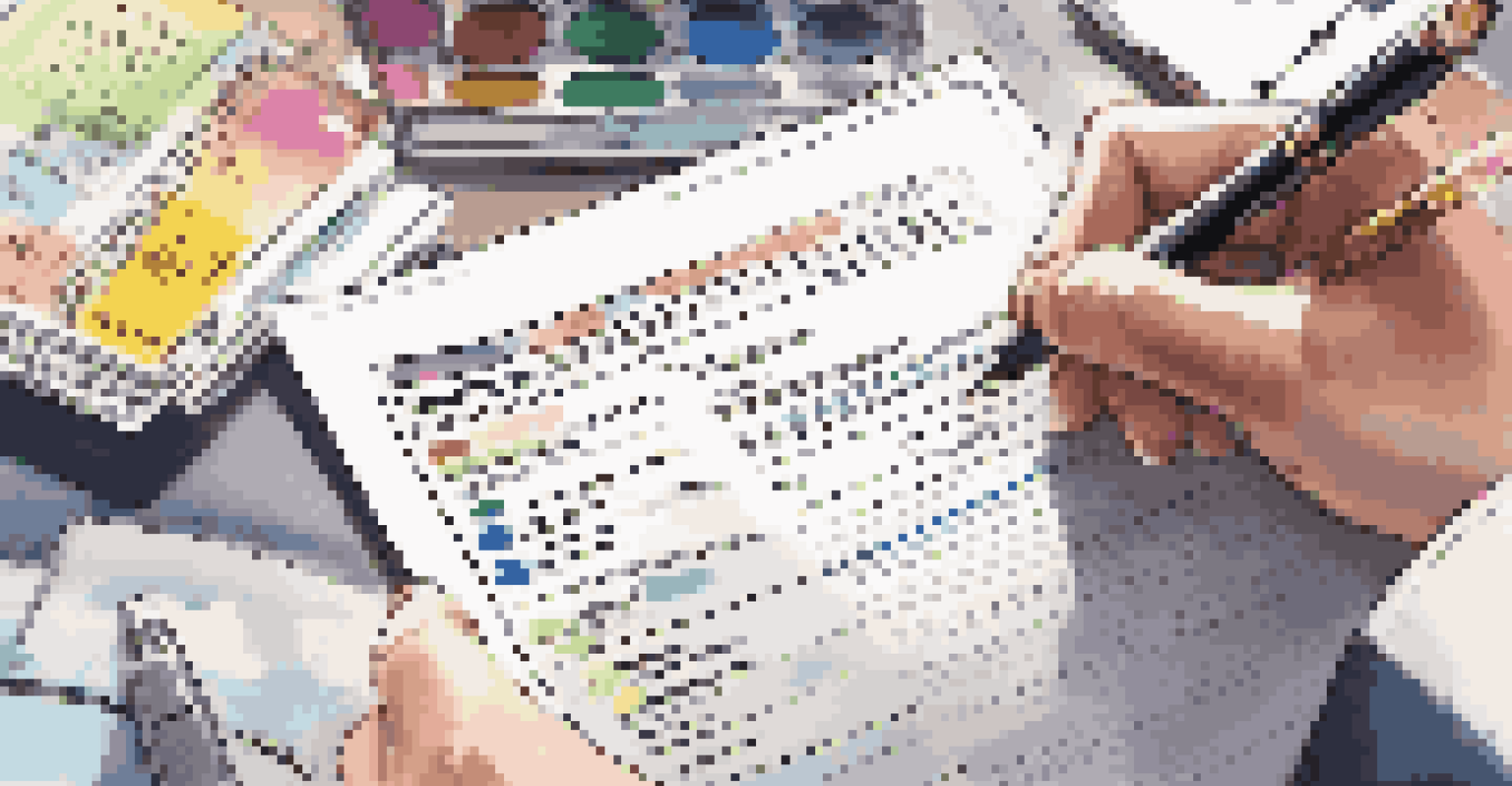How to Match Your Experience to Job Descriptions

Understanding Job Descriptions: The Basics
Job descriptions are more than just a list of duties; they’re a roadmap to what employers are seeking. They outline the skills, experience, and qualifications needed for a position, providing insight into the company culture and expectations. Understanding these nuances is the first step in effectively matching your experience to what employers want.
Your resume is a marketing tool, not a history lesson.
By breaking down the job description into key components, you can identify the essential qualifications versus the preferred ones. Highlighting these distinctions allows you to tailor your application more strategically. Think of it like a treasure map; the clearer your understanding, the easier it is to find the gold.
Additionally, taking note of keywords in the job description can help you align your resume and cover letter. These keywords often reflect the skills and experiences that are most important to the employer. By mirroring the language used, you demonstrate that you speak their 'language' and understand their needs.
Conducting a Skills Inventory of Your Experience
Before you can match your experience to a job description, it’s essential to have a comprehensive list of your skills and experiences. Start by making a detailed inventory of your past roles, including responsibilities and achievements. This self-reflection can reveal the strengths you may not have recognized before.

Once you have your skills inventory, categorize them into hard skills and soft skills. Hard skills are specific, technical abilities, like proficiency in a software program, while soft skills include interpersonal qualities like communication and teamwork. Both types of skills are valuable, but understanding their relevance to the job at hand helps you prioritize what to emphasize.
Master Job Descriptions
Understanding the nuances of job descriptions helps you tailor your application to meet employer expectations.
For example, if applying for a project management role, you might highlight both your experience with project management software (a hard skill) and your ability to lead a team effectively (a soft skill). This approach not only showcases your versatility but also demonstrates how your background aligns with the specific demands of the job.
Tailoring Your Resume for Each Application
Generic resumes often get lost in the shuffle, so tailoring your resume for each job application is crucial. Start by emphasizing the experiences that align most closely with the job description. This doesn’t mean you should lie or exaggerate; rather, it’s about presenting your real experiences in the best light.
The best way to predict the future is to create it.
You can do this by using specific examples that relate to the job. For instance, if the job requires leadership experience, highlight a time you successfully led a project. Use metrics where possible, like 'led a team of five to increase sales by 20%,' to provide concrete evidence of your success.
Remember, it’s not just about listing experiences; it’s about storytelling. Your resume should tell a cohesive story of your career, showing how each role has prepared you for the position you're applying for. This narrative approach can make your resume more engaging and memorable.
Crafting a Compelling Cover Letter
A cover letter is your chance to connect the dots between your experience and the job description. Use this space to elaborate on specific experiences that relate directly to the job you’re applying for. Think of it as a conversation starter that invites the employer to learn more about your qualifications.
Start with a strong opening that grabs attention, then dive into how your skills meet the needs outlined in the job description. Sharing anecdotes or specific accomplishments can illustrate your capabilities and make your application relatable. For example, if the job emphasizes problem-solving, recount a time when you navigated a challenging situation successfully.
Tailor Your Application
Customizing your resume and cover letter for each job application allows you to effectively showcase relevant skills and experiences.
Closing your cover letter with a call to action, such as expressing your eagerness for an interview, leaves a positive impression. It shows confidence and enthusiasm, key attributes employers appreciate. Essentially, your cover letter should complement your resume and enhance your candidacy.
Preparing for Job Interviews: Aligning with the Role
Once you’ve landed an interview, the next step is to prepare thoroughly. Review the job description again and think about how your experience relates to the questions you might be asked. This preparation helps you articulate your thoughts and present your experiences in a way that resonates with the interviewer.
Practice common interview questions, tailoring your responses to highlight the relevant aspects of your experience. Use the STAR method—Situation, Task, Action, Result—to structure your answers. This technique provides a clear framework for discussing your experiences and demonstrates your problem-solving skills effectively.
Additionally, don’t forget to prepare questions for the interviewer. This shows your interest in the role and the company. Asking about how success is measured in the position, for example, can provide insights into what the company values and further helps you align your responses during the interview.
Following Up: Reinforcing Your Fit
After the interview, following up with a thank-you email is not only polite but also an opportunity to reinforce your fit for the role. In your message, briefly reiterate your enthusiasm for the position and mention a specific aspect of the conversation that resonated with you. This personal touch can make you stand out in the minds of the interviewers.
Consider including a point about how your experience aligns with the company’s goals or values. This demonstrates your understanding of the role and the organization, showing that you did your homework and are genuinely interested in contributing to their success.
Learn from Experiences
Reflecting on your job applications and interviews fosters continuous improvement and enhances future employability.
Lastly, if you didn’t have a chance to discuss a relevant experience during the interview, this follow-up is a great opportunity to include it. Just keep it concise—this isn’t about rewriting your resume, but rather about reinforcing the connection between your experience and the job.
Continuous Improvement: Learning from the Process
Regardless of the outcome, every job application and interview is a learning experience. Take time to reflect on what went well and what could be improved. This self-assessment helps you refine your approach for future applications and boosts your confidence moving forward.
Consider seeking feedback from peers or mentors about your resume, cover letter, or interview performance. Constructive criticism can provide valuable insights that you might overlook on your own. After all, understanding how others perceive your experience can help you present it more effectively.

Moreover, staying current with industry trends and skills can also enhance your employability. Continuous learning can open new doors and ensure that your experience remains relevant. Embrace every opportunity to grow and adapt, as this mindset will serve you well throughout your career.